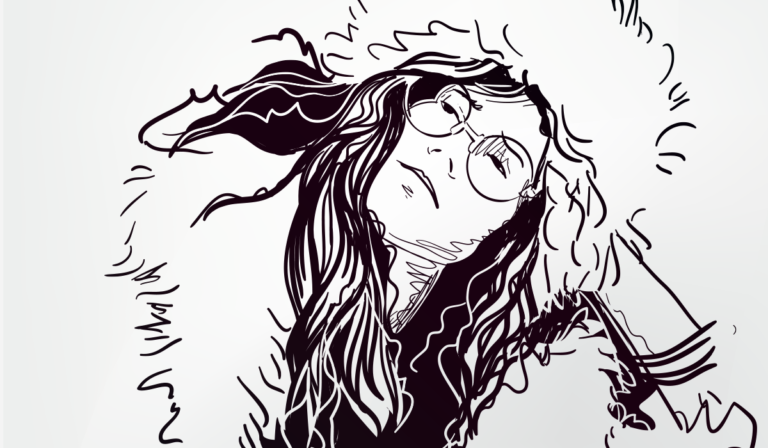
As reported in University Affairs on September 7, 2021 (link here) and by the writers here, the dispute between Access Copyright and York University ended with a unanimous and unequivocal decision of the Supreme Court of Canada. The SCC ruled that copyright tariffs approved by the Copyright Board cannot be foisted on unwilling customers, such as universities, colleges, and school boards (i.e. tariffs are not mandatory). In addition, the Court ruled that York’s fair dealing guidelines (which are similar to those in place at institutions across Canada) must be analyzed from both the perspective of the institution and the ultimate user (i.e. the students for whom the copies are made) – thus rejecting the lower courts’ conclusions that these guidelines are unfair.
As noted by University Affairs, Access Copyright and similar organizations are now sounding alarm bells and intensifying their calls to amend the Copyright Act to restrict users’ rights such as fair dealing and restore a much-reduced income stream to a few categories of Canadian authors. Their plea is simple: please stop educators from using our work for free. The plea is fallacious but it is pleasingly easy to grasp; on the other hand, the truth is nuanced and complex and not easily reduced to a slogan.
With the Federal Cabinet sworn in, now we can expect a resurgence of lobbying efforts; therefore, it behooves the educational sector to respond to the accusations and the misguided calls for copyright reform. Many voices are part of this effort, including Universities Canada, Colleges and Institutes Canada, the Canadian Association of Research Libraries, individual Librarians and legal scholars, and many others.
In this piece, we hope to arm those crafting these responses and communications with the robust, though by no means definitive, background of the dispute, and what we have witnessed from living it for the past decade.
In sum…
The educational sector is willing to pay its fair share. The break between Access Copyright and the educational sector (both K-12 and post-secondary) came at a time of major change in various areas: in the publishing industry (with the move to digital), in educational practice (with the move away from printed coursepacks and toward digital materials and mass adoption of course management software), and law (with the modernization of the Copyright Act by the Supreme Court of Canada and Parliament). Each of these changes has altered the calculous of what is fair.
We’ll touch on each of these issues in turn, below.
2010 – the times they were a-changin’
In 2010, the model license between post-secondary institutions and Access Copyright was expiring and negotiations were ongoing between Universities Canada (then known as the AUCC) and Access Copyright. What follows is a summary of the broader context in 2010, which was playing on the minds of educational institutions and their representatives when considering the value offered by Access Copyright’s offerings.
The move away from printed course packs. By 2010, educational institutions were accelerating the adoption of digital course management systems, which were starting to replace printed coursepacks.
This move was partially brought on by the advent of modern, online course management systems, as well as digital reserve systems. Just as importantly, educators recognized that students were wanting to consume more and more course materials digitally. Obviously, educators needed to meet students where they were at, technologically. To paraphrase a commentator at the time: the days of selling paper to young people are ending.
As a result, by 2010, institutions were already seeing marked decreases in the sales of traditional photocopied paper “coursepacks”, and other tools were coming to the fore that would not only replace them, but provide myriad other benefits (which we all can now recognize).
Better utilization of paid digital subscriptions. By 2010, educational institutions were already acquiring a great deal of content through paid digital subscriptions to many academic journals, periodicals, etc. The move to digital content focused Libraries and faculty on content that was already digital, made to be consumed digitally, and that did not require the additional step of copying or scanning paper resources. Of course, digital resources were well-suited to online course management systems and e-reserve systems.
It is important to note that these subscriptions were purchased, and the rights granted were specific for use in the educational and research context. Depending on the institution, subscription costs will vary from the thousands-, to millions of dollars per year.
eBook availability. Though it was relatively early days, by 2010 more and more physical books were also being sold as eBooks. Even then, eBooks could easily be accessed by multiple students at a time through the institution’s library, which further reduced the need to create paper photocopies to sell to students.
More Open Educational Resources. More and more educational content was being made available through Open Educational Resource (OER) licensing – meaning: content that was being published and made available for use in courses without payment, through licensing mechanisms like Creative Commons.
2010 – Access Copyright’s premature mic drop
When negotiations between Access Copyright and representatives of the post-secondary sector failed to result in an agreement, Access Copyright applied for the approval of a tariff under the Copyright Act. This moved the parties from a position of negotiating an agreement, to a position where they would be required to adopt a stance and argue before the Copyright Board about the appropriate price and terms of a tariff.
The strategy of pursuing a tariff rather than a negotiated agreement is certainly legally available and not inherently objectionable (though it is certainly unwieldy and costly compared to the costs of negotiating a reasonable agreement with the sector’s representatives).
Access Copyright’s strategy appeared to be a triumphant use of a legal process to accomplish what they could not through negotiation. However, as the Supreme Court of Canada has now confirmed, it was based on the incorrect theory that tariffs were in effect mandatory. The theory was that the full annual tariff amount could be collected from any institution if Access Copyright found evidence that a faculty or staff person at the institution made a single copy of a work in Access Copyright’s repertoire without authorization from Access Copyright or the work’s owner or exclusive licensee, and without properly exercising a user right.
While the use of the tariff approval process is itself notable, what was more objectionable was the content of Access Copyright’s tariff. In particular were these three issues:
- An exorbitant price increase – the agreements between Access Copyright and universities prior to 2010 were for the price of around $3 per FTE student, together with a 10c rate per page. Access Copyright’s proposed tariff set a rate of $45 per FTE. Since the broader technological and platform changes discussed above would serve to reduce the amount of copying each institution was likely to engage in year over year, the replacement of the per-page rate (which at least would reflect a reduction in usage) with a large increase in the per FTE student rate, was considered by many as unreasonable and uneconomical (and increasingly so every year).
- Audit Rights – where an institution’s main copying activity is centrally-produced coursepacks, recordkeeping is a relatively easy, administrative matter. Where faculty themselves are copying materials to be posted on a course management system, record-keeping is decentralized.
Therefore, Access Copyright’s proposed tariff gave Access Copyright rights to audit the activities of individual faculty members as well as access to course management systems. Such an intrusion by a third party, or an institution on behalf of a third party, raises concerns about interference with institutional autonomy and academic freedom and must be done very carefully, if at all, with buy-in from administration and faculties and faculty unions/associations. The tariff did not allow for any safeguards to ensure the protection of institutional autonomy and academic freedom…in other words: the core values of any post-secondary educational institution.
- Scope of the Repertoire – Access Copyright can only give what it has. What Access Copyright ‘has’ are certain, limited rights to works in its repertoire. However, Access Copyright steadfastly refused to credibly identify the works that are within its repertoire. This undermines confidence that paying the Access Copyright tariff will actually authorize any faculty member to copy the specific works that are relevant in any modern post-secondary institution.
Since the Copyright Board would take some time (likely years) to consider all these issues, the Copyright Board approved an interim tariff. With no time to adjust their practices and communicate to their faculty and staff, institutions had little option and tacitly agreed to operate under the interim tariff.
In light of all of the above, as well as correct legal advice that tariffs are not mandatory (meaning they cannot be imposed upon an unwilling post-secondary institution), an initially small group of institutions decided to “opt out” of the Access Copyright tariffs (the interim tariff and the final tariff, once approved). Most institutions timed their “opt-out” date with sufficient duration to establish copyright policies and procedures, as well as educational and technical supports for faculty and staff—many chose to “opt-out” as of September 2011, while most continued under the interim tariff. A small number of institutions negotiated separate licenses with Access Copyright.
2012 – the Legal Double Whammy
The summer of 2012 is notable for two major changes to the Copyright Act. First, the Copyright Modernization Act significantly amended various sections of the Copyright Act, including adding “education” to the list of acceptable fair dealing purposes.
After the Copyright Modernization Act had been passed by Parliament but before it came into force, the Supreme Court of Canada released its decision in Alberta v. Access Copyright, which memorably confirmed that teachers have a symbiotic relationship with students, and therefore the “research” and “private study” fair dealing purposes applied to teachers in the K-12 system who made copies of materials for use by students enrolled in their classes.
These changes confirmed that faculty could apply fair dealing to the preparation of course materials. Since fair dealing allows the copy of portions of works (and in some cases all of a work) provided the dealing is fair, post-secondary institutions created guidelines to help faculty and administrators apply fair dealing.
After careful analysis of the law, mostly judge-made law of Canada, and other jurisdictions operating under similar principles, the educational sector concluded that fair dealing for the purposes of education, private study and research could defensibly be interpreted as giving instructors rights to copy short excerpts of many types of works.
Since the Access Copyright license, and its proposed tariffs, also authorized instructors to copy short excerpts of various texts, there was considerable overlap between the rights that were now understood as automatically granted by the Copyright Act, and the rights offered by Access Copyright in exchange for payment. As a result, many more institutions decided to “opt out” of the Access Copyright tariff (eventually the vast majority opted out, even some of those who entered into separate licenses with Access Copyright).
2012/2013 – An iron curtain has descended…
Generally speaking, when Access Copyright switched gears and sought a tariff, it abandoned a cooperative, collaborative customer/supplier relationship, and replaced it with a user/regulator relationship, where any user who refused to comply was automatically dubbed an irresponsible scofflaw.
This approach has never been fair or reasonable as a business practice (demonizing and suing customers does not win customer loyalty), and now has been unequivocally rejected as a matter of law.
A consequence of this posture was that, from 2011 onward, Access Copyright did not work with the educational sector to craft services that were of real value to them. They appeared to have concluded that since users eventually will be forced into dealing with Access Copyright through the tariff (i.e. because tariffs are mandatory), there was no need to meaningfully engage in alternatives.
To be fair, Access Copyright did offer institution-wide licenses to institutions who wanted to avail themselves of Access Copyright’s offerings outside of the interim tariff. Simultaneously, Access Copyright chose not to offer a transactional (i.e. case-by-case) copyright clearance service to the post-secondary sector. This clearly was calculated to drive institutions toward institution-wide licenses, but instead only led to a further drain on Access Copyright’s revenues when institutions found reasonable and legal alternatives.
In addition, institutions made investments in improving policies, practices, and staff support to ensure that faculty and students continue to have legal access to the educational resources they need. For example,
- Investments in education – ensuring faculty know about their options both in terms of how to copy materials legally, but also how much content is already available to them (through previously purchased eBooks or digital subscriptions, and as OERs);
- Investment in guidance documents – ensuring that faculty, staff and students understand all of the user rights available to them, including but not limited to fair dealing;
- Investments in staff support to answer copyright questions, confirm the application of copyright, and obtain transactional (case-by-case) licenses;
- Adapting collection-acquisition strategies – acquiring eBooks when possible, ensuring digital subscriptions allow faculty and students the rights they need to fulfil their educational purposes;
- and so on.
2013/2021 – Testing the theory against a “convenient defendant”[1]
In 2013, Access Copyright filed a lawsuit against York University, citing copying conducted by five professors involving 87 works purportedly within Access Copyright’s repertoire. Access Copyright did not sue for damages from copyright infringement – instead, it sued to collect all of the royalties that would apply to York under the tariff (i.e. seeking to enforce the interim tariff and ultimately the final tariff, which if approved at Access Copyright’s proposed $45 per FTE would have amounted to approximately $2 million).
The saga of this litigation has been thoroughly recounted elsewhere and need not be repeated here.
It is important to note that the mere spectre of the litigation had a chilling effect—institutions did not feel it wise to update their fair dealing guidelines (lest changes may be used against York), and responding to the few attempts by Access Copyright to engage in discussions and negotiations, had to be embarked on with great caution.
In fact, when the original tariff was finally approved by the Copyright Board in December 2019 (at $24.80 per FTE), the final reconciliation of amounts owed and owing to Access Copyright by Canadian post-secondary institutions was delayed on account of the uncertain outcome of the York litigation.
2021 – Into the light … but is that the sun or a headlight?
Ironically, during the decade that Access Copyright has been demonizing the educational sector as scofflaws, the educational sector has invested greatly in educating itself about copyright. Most institutions now have trained and dedicated staff who are focused on providing copyright education along with copyright advising and clearance services to their community. This has benefited, and will continue to benefit, authors and publishers, as well as copyright users who work with these institutions.
Of course, educational institutions have continued to spend millions of dollars building and maintaining their collections (both physical and digital), investing in copyright literacy, and providing practical and effective services that enable faculty, staff and students access to copyright-compliant educational and research materials.
In general, Institutions have as strong an argument as they ever have that they are copyright literate and compliant.
So, with the Supreme Court of Canada’s ruling in the books, the question is whether Access Copyright will come to the table with options that actually work in the modern-day reality of academic publishing and use of works in the academic context, and–more importantly—adopt the tone and tenor of a consumer-focused organization that re-establishes its credibility as a business partner (i.e. one that engages with consumers rather than demonizing and threatening them). If so, it will likely see some of their customers return.
Or will it seek to continue its attack posture, preparing to draw new battle lines?
Unfortunately, it appears to be the latter. Lobbying efforts can be expected to be redoubled with the new government in Ottawa, with calls to amend the Copyright Act to restrict users’ rights such as fair dealing. One would hope such attempts to restore an income stream from an outdated business model would fall upon deaf ears. However, as noted above, their plea is deceptively simple and the truth is intricate—as this extraordinarily long article shows.
Nonetheless, it behooves the post-secondary sector to respond to the accusations and the misguided calls for copyright reform. Many voices will need to be a part of this effort, and we hope you will add yours.
[1] Harriet Lewis, then-University Secretary and General Counsel of York University, quoted in University Affairs: Access Copyright lawsuit against York is the first test of fair-dealing guidelines, Oct 30, 2013: https://www.universityaffairs.ca/news/news-article/access-copyright-lawsuit-against-york-is-first-test-of-fair-dealing-guidelines/



